#Agincourt 1415
Text

The French Heavy Knight is unstop....
#history#funny#france#french cavalry#long bow#longbowmen#england#english#medievil#henry v#1415#agincourt#battle of agincourt
11 notes
·
View notes
Photo

The Battle of Agincourt 1415 AD, Marc Miller’s board wargame based on the battle at Azincourt, October 25, 1415 (Game Designers’ Workshop, 1980 boxed version of game, originally released in a Ziploc bag in 1978, a “Series 120 Game” intended for 2 players to complete within 2 hours) This is of course the same Marc Miller and GDW that published Traveller in 1977 -- The supposed divisions between historical and sci-fi and fantasy players, or between wargamers and RPGers, make no sense to those of us who’ll play anything.
#The Battle of Agincourt#Marc W Miller#Agincourt#Azincourt#medieval#The Battle of Agincourt 1415 AD#Marc Miller#GDW#Game Designers' Workshop#board game#wargame
80 notes
·
View notes
Photo




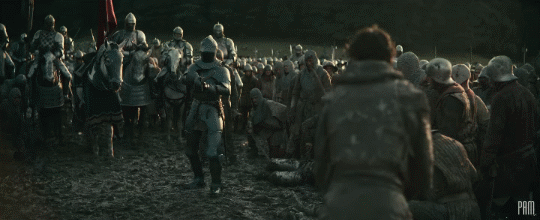
The King (2019)
#2019#1415#gif#film#movie#The King#Robert Pattinson#The Dauphin#Timothee Chalamet#Prince Hal#Hal#King Henry V#Joel Edgerton#John Falstaff#Battle Of Agincourt#Hundred Years' War#England#France#knights
94 notes
·
View notes
Text
I like to imagine that sometime in the 1700s or whatever Hob decides he needs to make his peace with Shakespeare. Bloke's been dead for ages, its time to move on from the irritation jealously that he feels. So he goes to a production of Henry the Fifth which is A Mistake because of course Hob was actually There in 1415. He was at the Battle of Agincourt and it was nothing like that!!!! Everybody had dysentry!!!! The king did NOT go around chatting with soldiers at midnight!!!! The weather was shit!!!!! Nobody made jokes about leeks, that is not what tennis balls looked like and that DEFINITELY ISN'T HOW YOU HOLD A LONGBOW!!!!! and he eventually walks out and decides that Shakespeare Officially Sucks and he's going to Hatewatch every single one of the stupid plays so he can talk shit about them for the rest of eternity.
#i have a lot of thoughts about medieval soldier Hob and you guys are going to hear about them one day#the sandman#hob gadling#dreamling#hob vs shakespeare
2K notes
·
View notes
Text


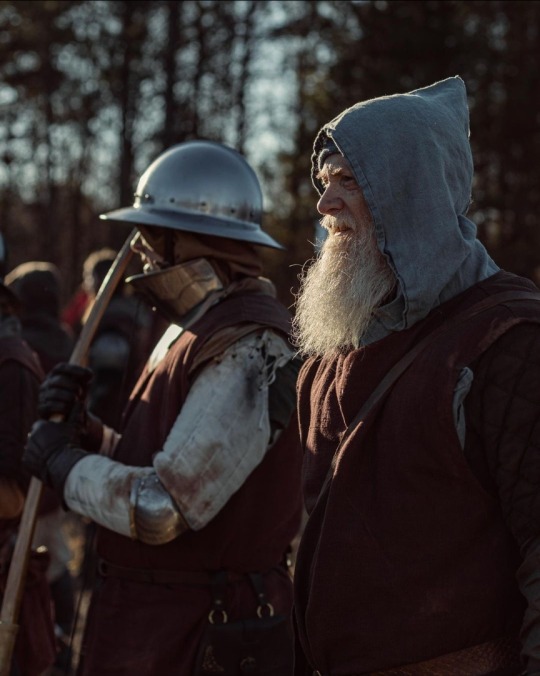
English Longbowmen at the Battle of Agincourt, 1415
From @fellandfair on Instagram
111 notes
·
View notes
Text
Texts in Like Minds: Alex's Essay (deleted scene)
It has only recently come to my attention that a deleted scene exists on some versions of the Like Minds dvd (not the US version sadly). Thanks to @general-theory-0f-relativity, I learned about and was able to see this scene, and I really wish it had been included in the final cut for reasons I will explain in another post. The scene is in their lit class, and it involves the teacher handing back graded assignments. Alex's essay title is clearly legible despite the low quality of the video, and I immediately had some thoughts about it in relation to his character. Unfortunately, the video quality and the shots involved do not allow us to read the title of Nigel's essay other than to determine that is definitely a different topic. This tracks with my own experiences in lit classes and as an English lit major in college; we generally were given a list of potential essay topics to choose from. Based on those two pieces of information, I draw the conclusion that Alex intentionally chose the topic of his paper.

The title: "Compare and contrast Dulce et Decorum Est, Anthem for Doomed Youth, and the Before Agincourt speech from Henry V"
Alex’s essay topic is incredibly common in English literature classes, essentially pitting two opposing ideologies against each other. The Agincourt speech from Shakespeare’s Henry V is constantly quoted and paraphrased in media, and chances are good that most of you will have heard (or heard of) at least a part of it. To sum it up, this is a speech being given by King Henry V to his soldiers as they prepare to engage the French in the Battle of Agincourt in 1415. Facing a dire situation in which they are badly outnumbered, the king is trying to find some way to boost the morale of his men and encourage them to enter a battle in which hope is small and many of them will certainly die. He does this by appealing to their sense of courage and honor, painting a picture of the glory they will earn for their heroic deeds and suggesting that they will be long remembered and highly praised by their countrymen. These ideals are used by leaders and nations to lead the reluctant into the horror of battle: honor, renown, courage, brotherhood, duty, and loyalty to a cause or state. It is the ages-old refrain sold to the common man–that to die in battle is actually a desirable thing, for it proves one’s character and masculinity.


The two poems mentioned were both written by WWI poet Wilfred Owen, famous for his castigation of war and of the madness of that conflict. “Dulce et decorum est” refers to a quote from Roman poet Horace: Dulce et decorum est pro patria mori - "It is sweet and fitting to die for one’s country." This sentiment is the same as that espoused by Henry V in his pre-battle speech, but Owen calls out the idea as inherently false, deriding it as propaganda meant to lure men into a pointless war. In this poem, as in “Anthem for Doomed Youth” and the rest of his war poems, Owen vividly depicts the brutality and misery of war. The lived experience of the soldiers undermined the false promises of a glorious and honorable struggle. The horrors of WWI would forever traumatize an entire generation, and Owen himself would die only one week before the end of the conflict.
As a side note, it is worth mentioning that Owen met poet Siegfried Sassoon while recuperating from shell-shock in 1917, and it is now believed that they were romantically involved despite attempts to straightwash Owen. Sassoon encouraged and helped Owen with his writing, including both poems referenced here, and he was the one who collected and published Owen’s works after his death. (Further reading on the gay war poets.) It's unlikely that Owen's gay relationship with Sassoon was covered in his class, but we know Alex was an extensive reader who pushed outside the boundaries of what he was taught. He could have discovered this information on his own.

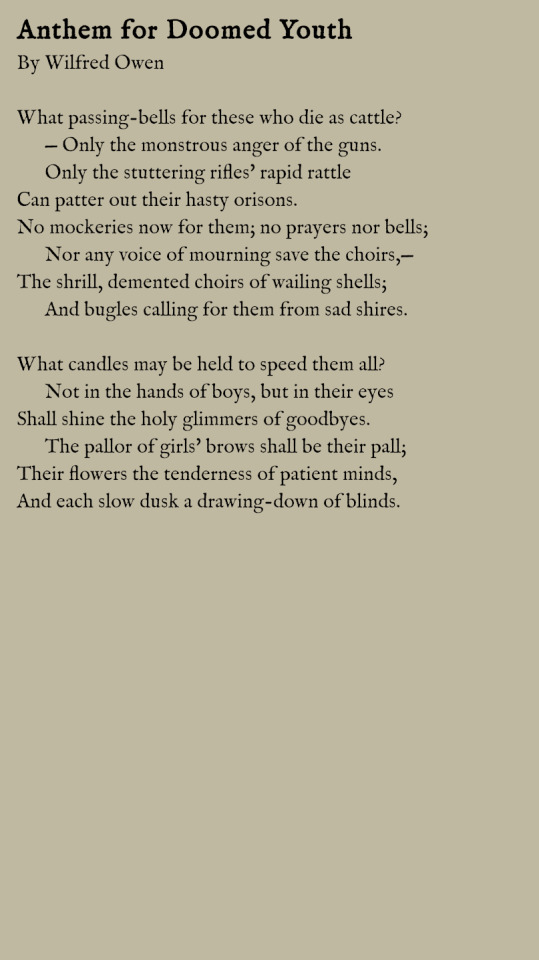
While the comparison itself is extremely common in English lit classes (a quick Google search will show you a number of essays on this exact question), I find it a particularly interesting choice for Alex. As someone who questions authority, rebels against rules, and rejects conventional ideologies, it is fitting that he would be drawn to write an essay examining this conflict between ideal and reality. Knowing as we do his feelings regarding the hypocrisy of the Church and the causes and wars they engage in, one suspects he likely ascribes to the same sentiment as Owen–rejecting the propaganda of patriotism and sacrifice in the service of a Cause sold by those with self-serving interests. I tend to think this character trait is one of the main factors influencing his interactions with Nigel–on one hand, he is reluctant to support any notion of a higher purpose or cause, but on the other, he is intrigued by a cause which paradoxically espouses iconoclasm - attacking or assertively rejecting cherished beliefs and institutions or established values and practices.
As a small side note, both actors' filmographies include WWI movies: Tom Sturridge in Journey's End and Eddie Redmayne in Birdsong. After his starring role in Birdsong, Eddie became interested in WWI and has been involved in projects honoring and remembering those involved in that war. Here's a video on FB of him reading another of Wilfred Owen's poems, "Asleep". I had a past life/WWI AU idea based on the story of Owen (Nigel) and Sassoon (Alex), so discovering this scene was absolutely chef's kiss perfection for me.

#i love drawing the connections can you tell?#like minds#nigel colbie#alex forbes#tom sturridge#eddie redmayne#murderous intent#like minds 2006#like minds analysis#nigel colbie x alex forbes#like minds au
37 notes
·
View notes
Text
'We few, we happy few, we band of brothers'
It is one thing to disprove and even despise The Shire and its netizens. It is a whole other affair to violently bash S's skills, based on absolutely nothing else than spiteful disappointment.
We are being told by Mordor's basement polymaths the man cannot act. It is probably by an unelucidated strike of luck or by charity that he was cast by *** to embody book boyfriend JAMMF, when he has only 5 (five) known facial expressions in his quiver. He was the weakest link of Season 1 cast: I suppose the BJ/Frank Randall 2-in-1 does have a fan club, after all. His acting is wooden. He has chemistry only with C and by Her grace only, because you know, gay as a bag of popcorn. He is a semi-literate hunk, with documented spelling problems. Even more so, when we conveniently toss aside the mounting hysteria during Quarantein Ha-wa-wee disgrace (hey Pooks and all the sock account Dobermans: I hope you remember your Twitter blaze of glory moment every single morning while brushing your teeth). And (also a favorite) he doesn't read, he doesn't prepare, he is sloppy, like that.
God forbid you'd try to set this colossal unfairness straight. You are automatically signed up to the Mommies for Sam Committee and labeled accordingly. Brainless victim (of what, since he is basically useless, but let's not embarrass ourselves with logic), unapologetic limerent inamorata, romantic whale, delusional rural shipper, conspiracy theory troll. Anything goes, really and we know the tune by heart, at this point in time.
Not so long ago, I was re-watching the oath sequence of (5.01) The Fiery Cross, for which I suppose all background/context is superfluous. The only clip I could find has appalling sound, but should still immediately take you back to the Return of the Kilt (starts at 0:56):
youtube
It immediately reminded me of this:
youtube
This is the extraordinary Henry V Saint Crispin's Day speech. Pure Shakespeare and unmatchable Olivier. It is also a well-documented kamikaze moment of the Battle of Agincourt (1415), when a heavily outnumbered English army defeated in an almost miraculous turn of events the French. Granted, the real speech must have been way more concise, but nevertheless a potent affair, with Henry's cunning use of rumors having it that the French would cut two fingers off each captured archer's right hand, to virtually neutralize them. And his army was, essentially, an army of longbows.
Whatever it was, it worked. It worked so well, that it even gave Winston Churchill the idea of asking Laurence Olivier to broadcast this speech for the BBC some time around 1942 and then make a movie of the whole play, in 1944. Again, context is important -it always is, by the way - and it sheds the right light on Olivier's performance. More than acting, it is damn effective war propaganda, a wonderful patriotic act and completely representative for the "we shall fight them on the beaches and we shall never surrender" spirit. It is also all about acting as summoning of energy: Olivier manages to channel Henry V, he is Henry V and this immediately gives an irresistible depth and truth to his performance.
For contrast, one could compare his version with Branagh's 1989 interpretation (https://youtu.be/y1BhnepZnoo), which I am not adding here for the sake of levity. The main difference is, for me at least, palpable: Olivier completely suppressed his ego, which I am afraid is something impossible to achieve for Branagh. His take on the speech aims to be more modern and natural, and yet it is still all about Branagh promoting his art. And we know it immediately. A fairly honest tableau vivant, but no depth and nowhere near as majestic as the other.
I am not saying here that S is on par with Laurence Olivier. That would really mean being a romantic whale and I am the one you start to get, I hope, acquainted with. What I am saying is that this guy you just love to humiliate and endlessly cackle about every single day God makes, really, deliberately knows what he is doing in there. I would bet handsome money on S carefully watching and re-watching Olivier's Saint Crispin's Day monologue, in order to prepare for that particular scene. The similarities are, to me, evident, as is the consistent hard work and - dare I say it?- massive talent. It's all about owning the scene and being in the moment. And it is arresting, at times.
All of this is not exactly some shipper far-fetched speculation. S wrote, after all, in Waypoints (and the reference is way too spot on to believe in a kind gesture of the ghostwriter) that he "devoured"

I see great things. I see a very gifted guy who has no ego (C was spot on and for an actor, that is a blessing) and also probably no idea of his (considerable) acting range. I also see a guy who, spare for OL, has been grossly, unfairly miscast and overlooked. And who was determined to take whatever was available or easy on the schedule, in order to remain relevant. I may not be a good client for his booze, but I would pay handsomely to see him in something along the lines of For Whom The Bell Tolls. Or even (if you want a more exotic but oh, so rewarding alternative) a still inexplicably missing Western adaptation of Bulgakov's Master and Margarita (probably not the best times for that one, but still: Bulgakov was, after all, born in Kyiv and not really a fan, to say the least, of tyrants). That's exactly how damn good he is.
How was it, Kidneystone BIF? Oh. "No boundaries. No respect. No class." Exactly, madam. You said it yourself.
88 notes
·
View notes
Text
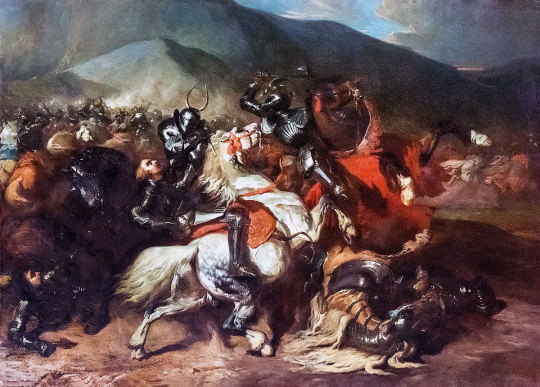

On 22nd March 1421, Scottish army. under the Earl of Buchan defeated English forces at Bauge in Anjou, France.
Not heard of it? That’s because the history we were taught in school was all anglicized, oh we did get a wee bit about the 100 year war, mainly Agincourt, because the English won that day, or possibly Crecy, another victory for them, Bauge and many other times the English were gubbed are ignored.
Ok you might be wondering why I say a Scottish army, historians all say that the majority of the troops were Scottish soldiers, aye there was a few Frenchmen fighting on “our” side, but this was very much a Scottish victory over an English army.
This all goes down as part of the Auld Alliance, which was signed in 1295 by King John Balliol and Philip IV of France. The Alliance was renewed periodically after that date and by the 1410s it was very much “in play” as Henry V of England initiated the third phase of the Hundred Years War, often known to historians as the Lancastrian War.
In 1418, it was the French Dauphin who called on his Scottish allies for assistance in his efforts to curtail Henry’s depredations after the great battle of Agincourt in 1415. It had to be the Dauphin, or Crown Prince, who sought help from Scotland because the French king, Charles VI, was already showing signs of the mental illness that would eventually see him nicknamed Charles the Mad.
The French aristocracy had split into two factions with many supporting the Duke of Burgundy in his aspirations to take the throne, while many others stayed loyal to the King and the House of Valois, known as the Armagnacs. Increasingly it was the teenaged Dauphin, the future Charles VII, who made all the major decisions for the Valois regime and, faced with the Burgundy alliance with Henry V and the surrender of many of his own forces, he sent for help from Scotland.
The complicating factor at the time was that King James I of Scotland was still a prisoner of the English, albeit that he was part of the royal household of Henry, whom he greatly admired, and he would actually fight with the English army against the French in France in 1420. In charge of Scotland was the Duke of Albany, Robert Stewart, who had become regent when James was first captured by the English in 1406 while en route to France.
There had been no large battles between the Scots and the English since the Battle of Homildon Hill, or Humbleton Hill, in 1402 won by the English, but with England preoccupied with France, Albany no doubt felt it safe to respond positively to Scotland’s oldest ally. By 1419, there was also peace of a sort along the border with England so the Scots could afford to send an army of around 6000 men including men at arms, spearman and archers to serve alongside the remaining French royal army.
Henry V’s of England’s brother, Thomas the Duke of Clarence led 10,000 men south towards the Loire. They set about besieging the castle at Bauge when the Scots were garrisoned, they made contact with them the day before Good Friday. A truce was reached, lasting until Monday, so that the combatants could properly observe the religious occasion of Easter.
The English lifted their siege and withdrew to nearby Beaufort, while the Scots camped at La Lude. However, early in the afternoon of Saturday Scottish scouts reported that the English had broken the truce and were advancing upon them hoping to take them by surprise. The Scots rallied hastily and battle was joined at a bridge which the Duke of Clarence, with banner unfurled for battle, sought to cross. A detachment of a few hundred men under Sir Robert Stewart of Ralston, reinforced by the retinue of Hugh Kennedy, held the bridge and prevented passage long enough for the Earl of Buchan to rally the rest of his army, whereupon they made a fighting retreat to the town where the English archers would be ineffective.
Both armies now joined in a bitter melee that lasted until nightfall. During this time Sir John Carmichael of Douglasdale broke his lance unhorsing the Duke of Clarence; since that day the Carmichael coat of arms displays an armoured hand holding aloft a broken lance in commemoration of the victory. Once on the ground, the Duke was killed by Sir Alexander Buchanan. The English dead included the Lord Roos, Sir John Grey and Gilbert de Umfraville, whose death directly led to the extinction of the male line of that illustrious family, well known to the Scots since the Wars of Independence. The Earl of Somerset and his brother were captured by Laurence Vernon (later elevated to the rank of knight for his conduct), the Earl of Huntingdon was captured by Sir John Sibbald, and Lord Fitz Walter was taken by Henry Cunningham.
On hearing of the Scottish victory, Pope Martin V passed comment by reiterating a common mediaeval saying, that the Scots are well-known as an antidote to the English.
20 notes
·
View notes
Text
12 notes
·
View notes
Text


The thing I love, though, is when they trot out the Crown Jewels and The Black Prince's Ruby gets to put in an appearance.
The Black Prince's Ruby (which is not a ruby at all, but a very large spinel) has been part of the Crown Jewels since the 14th century. Its tale is full of blood and betrayal.
The "ruby" originally belonged to Abu Sa'ïd, one of the family members of the Caliph of Granada before its "reconquest" by the Christian monarchs of Spain. In 1361, during a power struggle between members of the ruling family, the Caliph Muhammad VI and his retinue were lured to Seville under terms of a peace negotiation from Don Pedro "the Cruel," King of Castile. Once there, the Caliph and his retinue were ambushed and beheaded. The ruby was found on Abu Sa'ïd's body at that time, and came into the possession of Don Pedro.
In 1366 Don Pedro's half-brother led a revolt against him. He called in reinforcements from England, led by Edward the Black Prince, to help him hold his throne. Part of that payment was the ruby being given to the Black Prince. The other part of the payment was that Don Pedro's daughters were given in marriage to the Black Prince's brothers. It didn't help Don Pedro for long; three years later his half-brother was able to catch him in a trap and kill him, becoming the new King of Castile.
The Black Prince took the ruby back to England. It disappeared from the historical record until it pops back up in 1415, when Henry V wore it at the Battle of Agincourt in France. The ruby may have helped save his life at the battle. The Duke of Alençon struck Henry V on the head with a battleaxe, but it glanced off his jewel-encrusted crown. Perhaps it struck the Black Prince's ruby, which is why it now has a smaller ruby inset to cover a flaw?
Richard II also wore it at the Battle of Bosworth, where he died.
It was set into the Tudor Crown in 1521. Oliver Cromwell sold it off after the Civil War. Charles II bought it back, and it's been in the Royal Jewels since then, and was set into the current crown in 1838 for the coronation of Queen Victoria.
Oh, by the way, the ruby was "born" in Tajikistan. So it had already made a huge journey to show up in Spain in the 14th century.
25 notes
·
View notes
Text
9 things you didn't know about Saint George

Think of St. George and you're probably picturing a heroic knight slaying a ferocious, fire-breathing dragon.
As the country's patron saint, St. George's story is as iconic as his white and red flag.
But like many early saints, the exact details of his life remain a mystery.
Here, we separate fact from fiction to try to get closer to the truth behind the legend of St. George.
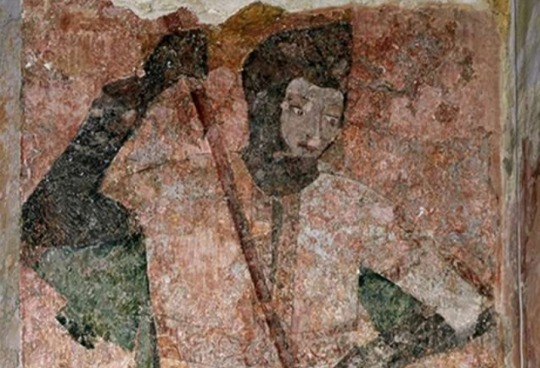
1. St. George wasn't English ...
St. George might be hailed as a national hero, but he was actually born – in the 3rd century AD – more than 2,000 miles away in Cappadocia (modern day Turkey).
He is thought to have died in Lydda (modern day Israel), in the Roman province of Palestine in AD 303.
It is believed that his tomb was in Lod and was a centre of Christian pilgrimage.
2. ... and he wasn't a knight either.
Although St. George is often depicted in popular culture as a knight in shining armour, the truth is less fanciful.
Whilst St. George was depicted from the 11th century as a chilvaric knight or a warrior on horseback, it is more likely that he was an officer in the Roman army.
3. St. George was a martyr ...
Like many saints, St. George was described as a martyr after he died for his Christian faith.
It is believed that, during the persecutions of the Emperor Diocletian in the early 4th century, St. George was executed for refusing to make a sacrifice in honour of the pagan gods.
4. ... but he never visited England
Although St. George never visited England, his reputation for virtue and holiness spread across Europe and his feast day – the 23rd April – was celebrated in England from the 9th century onwards.
He became popular with English kings.
Edward I (1272-1307) had banners bearing the emblem of St. George (a red cross on a white background) and Edward III (1327-77) had a strong interest in the saint and owned a relic of his blood.
The St. George cross was not used to represent England until the reign of Henry VIII.
5. The dragon was added later.
The story goes that St. George rode into Silene (modern day Libya) to free the city from a dragon who had a taste for humans, but it’s a story that post-dates the real George by several centuries.
Images of George and the dragon survive from the 9th century – 500 years after his death.
Originally, these may simply have been representations of the battle between Good and Evil.
However, the story was developed and popularised in the Middle Ages in a compendium of stories about saints’ lives, The Golden Legend.
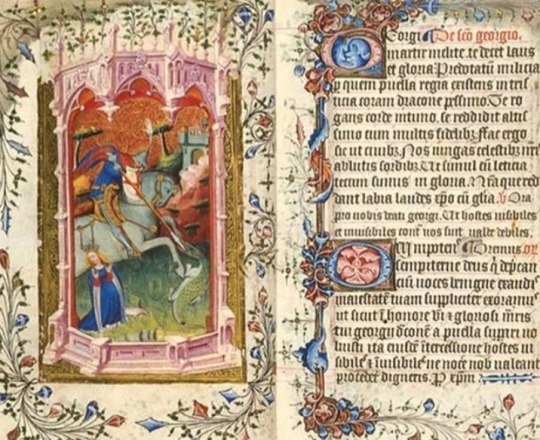
6. St. George was a saint for 1,000 years before the 'holiday'
St. George was canonised in AD 494 by Pope Gelasius, who claimed he was one of those 'whose names are justly revered among men but whose acts are known only to God.'
A feast day of St. George has been celebrated in England for hundreds of years on April 23, which was possibly the date of his martyrdom.
Following the Battle of Agincourt in 1415, St. George's Day became one of the most important feast days in the English calendar.
7. England isn't the only country to celebrate St. George
St. George is truly an international saint and England is not the only country or region to claim him as its patron.
England shares St. George with Venice, Genoa, Portugal, Ethiopia, and Catalonia among others as their patron saint.
Many of these places have their own celebrations and ceremonies in his honour.
8. People turned to St. George for protection
During the Middle Ages, people believed that St.George was one of the 'Fourteen Holy Helpers' – a group of saints who could help during epidemic diseases.
St. George's protection was invoked against several nasty diseases, many fatal and with infectious causes, including the plague and leprosy.
From around 1100, St. George’s help was also sought to protect the English army.
In William Shakespeare’s Henry V, the monarch calls on the saint during his battle cry at the Battle of Harfleur in the famous “Once more unto the breach, dear friends” speech, crying “God for Harry! England, and St. George!”
Five hundred years later – during the First World War – a ghostly apparition of St. George was said to have aided British troops during their retreat from Mons, and the naval commander of the Zeebrugge Raid cited the saint as inspiration.
9. St. George represents those we honour
The Order of the Garter, founded by Edward III in 1348, is the highest order of chivalry in the country and Queen Elizabeth II is at the helm as Sovereign of the Garter.
To this day, St. George’s cross still appears on the Garter badge and his image is the pendant of the Garter chain.
In 1940, King George VI created a new award for acts of the greatest heroism or courage in circumstances of extreme danger.
The George Cross, named after the king, bears the image of St. George vanquishing the dragon.
The image of St. George also adorns many of the memorials built to honour those killed during World War One.
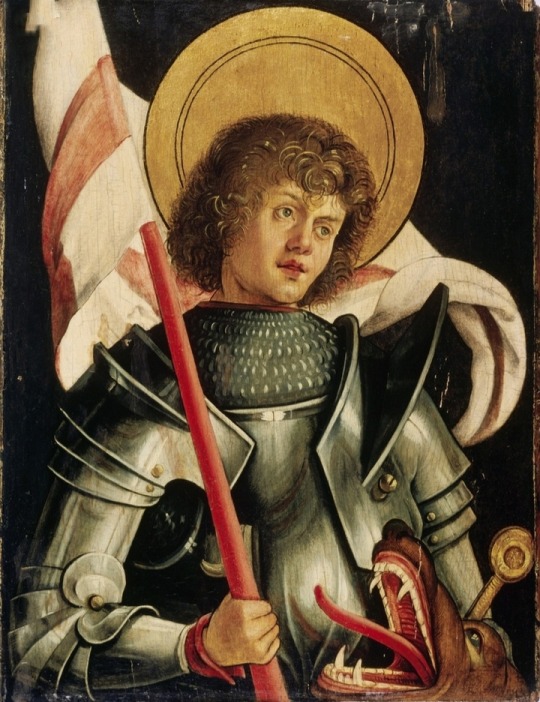
#Saint George#The George Cross#Order of the Garter#St. George's Day#The Golden Legend#Saint George and the Dragon
25 notes
·
View notes
Text
ruby
The glowing ruby shall adorn,
Those who in July are born;
Then they’ll be exempt and free
From love’s doubts and anxiety.
— Gregorian birthstone poem
In the middle and right at the forefront of the Crown of England is a giant polished red stone. It is called the Black Prince's Ruby - and some people say its cursed.
The stone's story starts in Iberian Peninsula, where legends says that it was owned by Abū Sa'īd, the last Sultan of Granada. Abū Sa'īd was at war with Don Pedro of Castile and finally agreed to surrender. When the two sides met to finalize the agreement however, Pedro lived up to his moniker of 'the Cruel' and murdered the off-guard sultan and his entire entourage. The blood red stone over two inches long was found on the dead ruler's body and Pedro took it as a a trophy. Bad luck came along for the ride. Shortly after the deed, in 1366 Pedro's rule was challenged by one of his brothers and he enlisted the help of the English Edward of Woodstock, a man otherwise known as the Black Prince. After the revolt was put down, Edward demanded Pedro's two daughters - and the stone, in exchange for his help. Within three years, Pedro was dead. Edward, heir to the English throne, didn't live long enough to even rule. After that, the blood stone disappeared until 1415 when Henry V wore it on his helmet in his war with France. He almost lost it, and his head along with it, to an axe blow during the battle of Agincourt. Richard III wasn't so lucky when he wore the same stone during the Battle of Bosworth, where he was killed. Despite that, the stone stayed in royal hands until Oliver Cromwell's rebellion where it disappeared for a time from the records. It showed back up again with Charles II in 1660 though and in 1838 it became the crowning jewel in Queen Victoria's coronation crown.
By then however, it wasn't considered a ruby anymore. In 1783, chemistry had advanced enough to differentiate between rubies and their look-alike, magnesium bearing spinels.
Since July's birthstone is the ruby, let's take a closer look at it before the month is over.
Rubies are considered the second most valuable jewel in the world, one of the Big Four, with the others being diamonds, sapphires and emeralds. They are second in hardness only to diamonds. Ancient sanskrit gave them the name ratnaraj, which means 'the king of jewels'. They have been mined in Myanmar since 2500 BC (or only 600 AD according to another site, though there are records of rubies traveling the North Silk Road from China as far back as 200 BC and they are mentioned in the Old Testament and the Torah so this is one of those wobbly 'facts'). Still, rubies that come from that part of the world are still considered the high standard today. In color, they can range from a red-purple to 'pigeon blood' red to orange or pink. Rubies are used in lasers, with the first one being built in 1960. Rubies from Greenland are said to be the oldest in the world, clocking in at 3 billion years old.
Impressive, isn't it? And anything with this much history, has to have stories that go with it. Let's talk superstition.
With such a rich, red color, of course rubies would be associated with blood. In Burma, India and China, rubies were placed in helmets, breastplates and weapon scabbards, with the belief that they would both protect their wearer and encourage bravery, strength and stamina. In Persia, the ruby granted mental clarity as well as divine power. The Chinese gave rubies to each other as good luck and protective charms. It was said that when evil approached a dark blot would appear on the surface of the red gem and when the darkness cleared away the evil had passed by. In India, wearing a ruby on the heart side of your body will allow you to live in peace. In many cultures, the rich, red color of rubies makes them symbolic of love and passion. Even today, tradition holds that rubies are the ideal gift to give for 15th and 40th wedding anniversaries. Folklore says that rubies help with bleeding, inflammation and body heat.
And, of course, Dorthy's shoes in the 1939 technicolor movie The Wizard of Oz were ruby slippers, which showed up against the yellow brick road much better than the simple silver shoes of the book by the same name would have.
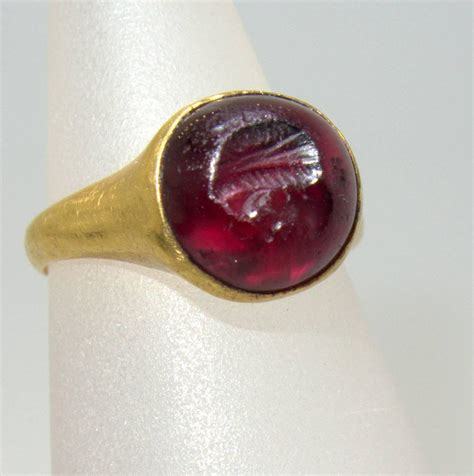
#superstition#folklore#ruby#birthstone#july#history#gemstone#jewelry#good luck#lucky#romance#crown jewels#united kingdom#black prince#edward black prince
13 notes
·
View notes
Text
Day 6: Yolande of Aragon
Yolande of Aragon (also known as Yolanda de Aragón and Violant d'Aragó.)
Born: 11 August 1381
Died: 14 November 1442
Parents: John I of Aragon and Violant of Bar
Duchess of Anjou and Countess of Provence
Children: Louis III, Duke of Anjou
Marie, Queen of France
René, King of Naples
Yolande, Countess of Montfort l'Amaury
Charles, Count of Maine
Yolande was born in Zaragoza, Aragon as the eldest daughter of John I of Aragon and his second wife Violant of Bar, granddaughter of John II of France.
In 1387 a marriage offer came through the mother of the King of Naples, Louis II.
At 11 years old she signed a document that disallowed any marriage promises made by ambassadors.
In 1395 another marriage offer came from Richard II of England.
After her father’s death, her uncle was convinced to marry Yolande to Louis. She was forced to retract her protest to the marriage.
Yolande and Louis were married on December 2, 1400 in Arles.
Despite her initial rejection and her husband’s illness, they had 5 children.
As a daughter of a king, she had a claim to the throne of Aragon after her uncle’s death without an heir. The laws at the time favored male heirs, thus after two years without a king they chose Ferdinand the son of Eleanor of Aragon and John I of Castile.
Yolande’s son, Louis, was the Anjou claimant to the throne, although his claim was excluded by the Pact of Caspe..
In the second phase of the Hundred Years' War, Yolande supported the French, particularly the Armagnacs. After the attack on the Dauphin of France by the duke of Burgundy, she and her husband refused the marriage of their son Louis to the duke’s daughter.
She met with the Queen of France to arrange the marriage of her daughter and the third son of the queen, Charles.
When Charles became the Dauphin and his mother worked against his claim, Yolande became a substitute mother for the teenager. She protected him against plots, funded and helped his cause. Yolande removed Charles from his parents' court and took him to her residence where he received Joan of Arc. After his marriage to her daughter Marie she became his mother-in-law and was heavily involved in the conflict of the House of Valois.
She succeeded in having him crowned.
As her husband was often away fighting in Italy, Yolande preferred to hold court in Angers and Saumur..
After the Battle of Agincourt in 1415, the Duchy of Anjou was threatened and Louis II had Yolande, their children and Charles moved to Provence.
On 29 April 1417, Louis II died leaving Yolande, aged 33, in control of the House of Anjou. Yolande acted as regent for her young son.
Yolande not only took care of the House of Anjou but also of Charles’s cause. Yolande supported Joan of Arc from the beginning and practiced political moves to ensure the success of Charles.
She retired to Angers and then to Saumur, where she continued to play a role in politics.
From at least 1439 onwards Yolande took care and prepared her granddaughter Margaret of Anjou for marriage.
She died on 14 November 1442 at the town house of the Seigneur de Tucé in Saumur.
She is described as "the prettiest woman in the kingdom", a wise and beautiful woman and her grandson Louis XI of France described her as "a man's heart in a woman's body”.
#women history#women in history#french history#joan of arc#margaret of anjou#anjou#15th century#medieval#medieval history#1400s#france
4 notes
·
View notes
Text
if history has taught us anything it is that the battle of agincourt was in 1415
14 notes
·
View notes
Photo

“All Saints' church, Laughton, anachronistic re-used monumental brass made circa 1405, of a knight wearing the style of armour worn at the Battle of Agincourt (1415), with Gothic-style canopy, serving as ledger stone for the remains of William Dalison[7] (died 1546), who lived well into the Renaissance age when the taste for the Gothic style had long passed.”
#monumental brass#monument#sepulchre#sepulchral memorial#memorial#laughton#england#west lindsey#lincolnshire#church#all saints church#1400s#knight#armor#ledger stone#william dalison#gothic#middle ages#renaissance
31 notes
·
View notes
Text
If history has taught us anything, it has taught us that the Battle of Agincourt happened in 1415.
4 notes
·
View notes